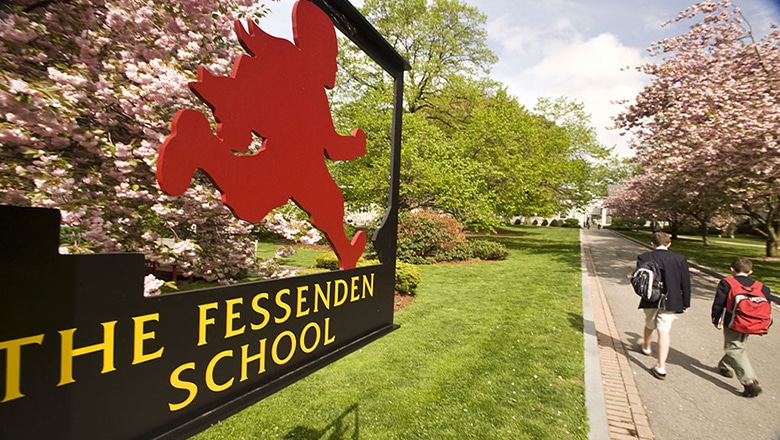Fessenden School
- $7,871 ANNUAL ENERGY SAVINGS
- $36,476 UTILITY INCENTIVES RECEIVED
- 179 ANNUAL MMBTU SAVINGS
- $7,871 ANNUAL ENERGY SAVINGS
- $36,476 UTILITY INCENTIVES RECEIVED
- 179 ANNUAL MMBTU SAVINGS
Conquering it all through facilities stewardship
Gathering data on its more than 100-year-old campus, The Fessenden School is building a case for energy-efficiency projects to sustain itself well into the future.
The Fessenden School’s motto is labor omnia vincit, or “work conquers all.” This mantra appears to apply not just to the 500 boys who attend school there through the 9th grade, but to the school’s administration as well.
Starting in 2017, Fessenden’s chief operating officer Mike Grossman began what has become a dogged pursuit of long-range energy reduction strategies on the school’s campus in Newton, Massachusetts. He knew he wanted to address energy costs and emissions reduction at the school, but he needed data—lots of data.
Facilities stewardship at independent schools such as Fessy is a complex chess game of prioritizing immediate needs against deferred maintenance and long-term systems upgrades. There are countless variables, constantly moving parts that make it challenging for any facilities director to get ahead of tackling things that break and planning for the future.
Grossman first worked with an energy firm to perform a facilities assessment to get a baseline of the condition of facilities equipment and deferred maintenance timelines. He found that while Fessenden’s facilities are fairly typical among independent schools, there were certainly opportunities to orchestrate plans to reduce energy. That’s when he approached GreenerU.
Following a utility infrastructure study, one of the main long-term solutions GreenerU recommended was converting the school’s steam heat system to hot water, a technology that reduces energy by 25%. Making the transition, however, requires infrastructure upgrades at each building on the school’s 41-acre campus—an undertaking most schools cannot take on at once.
“At the beginning of our relationship, Kailash [Viswanathan] shared that GreenerU does not just design and install solutions, but sticks with its clients long after to help make sure they are getting the most out of their physical plants, and that has definitely been our experience,” says Grossman.
Thus, GreenerU designed a system that enables a gradual shift to hot water when buildings are scheduled for a bundle of renovation projects. The first such building was the Performing Arts Center (PAC), originally built in 1983, which underwent a major overhaul and completed in 2019. Setting up a hot-water heating system drawn from the existing steam, Fessenden was able to begin the transition by retrofitting the PAC’s heating delivery. GreenerU then installed digital controls at PAC, which further improves energy efficiency through temperature set points and occupancy sensors.
GreenerU also designed and installed a new energy-efficiency LED lighting system at the school’s ice rink. The new lights more than doubled the light levels on the skating surface and slashed the power consumption to a fraction. The advanced controls system installed also allows the rink manager to tune light levels to the various scheduled activities in the rink, providing further energy savings.
Additionally, in various buildings on the campus, GreenerU has provided an updated controls system (Distech), both enhancing control capabilities and consolidating the energy management system onto a single platform. This gives facilities staff improved monitoring and control capabilities.
Ultimately, Mike Grossman’s vision for The Fessenden School is to find a balance between environmental responsibility, facilities stewardship, and offering the best possible spaces for Fessenden’s students to learn. By working to supply the information Grossman needs to make clearly informed decisions, GreenerU is helping this school conquer some of the toughest challenges of our time.

Campus Improvements
-
Steam-to-hot-water conversion
Steam systems tend to be inefficient, due to their age and design. Converting to hot-water offers a more efficient and more expedient manner of heating spaces.
-
Lighting
Transitioning to LED lighting is one of the most effective ways of reducing energy costs on campus.
-
Controls system upgrades
Controls enable building managers to set limits on energy-using features in a space, such as temperature set points or occupancy sensors.
-
Energy audit
An energy audit discovers opportunities for lowering energy consumption, improving occupant comfort and addressing maintenance issues.







